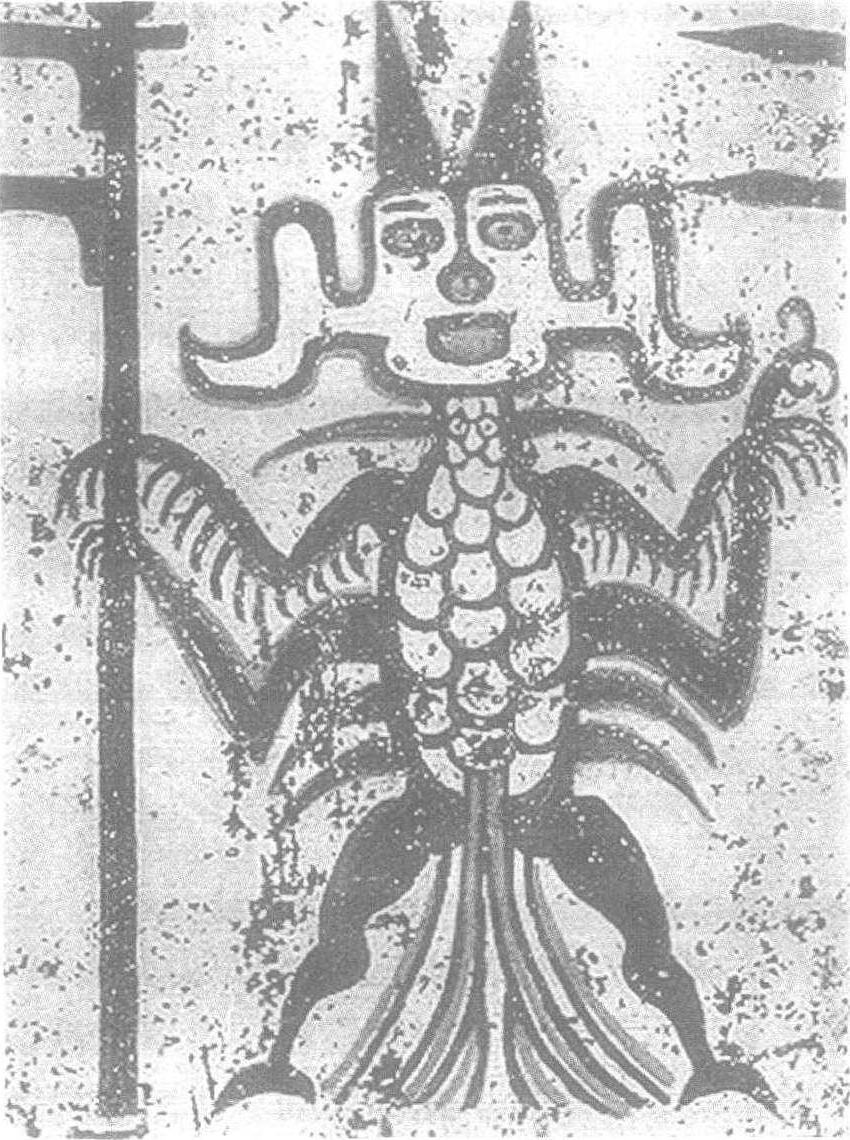羽人和方相氏
湖北随县战国早期曾侯乙墓出土漆棺画 “傩仪图”中的形象,是驱邪逐鬼之神,按《周礼·夏官司马·方相氏》解释: 方相氏的职务是蒙着熊皮,戴着黄金铸作的四目的假面具,穿着玄色的衣、朱色的裳,持着戈举着盾,率领众隶,进入屋内搜索驱逐疫鬼。大丧葬时在灵柩前面行进,到了墓地,进入圹中,用戈击刺四边角落,驱除山川精怪。漆棺画上的形象均作正面,八字步站立,身披羽衣,头戴假面具,大耳翅,长胡须,高鼻,硕口、,大眼睛,形象怪异,是为死者灵魂的保护神。

湖北随县曾侯墓漆棺画方相氏
- Goodyear,Charles
- Goole
- goosander
- goose
- gooseberry
- goosefoot
- Goossens,Sir Eugene
- gopher
- gopher tortoise
- Gorakhpur
- goral
- Gorbachov,Mikhail Sergeyevich
- Gorbals
- Gorboduc
- Gordian Knot
- Gordimer,Nadine
- Gordin,Jacob
- Gordon Riots
- Gordon setter
- Gordon,Charles George
- Gordon,Judah Leon
- Gordon,Lord George
- Goren,Charles Henry
- Gorgas,William Crawford
- Gorgons